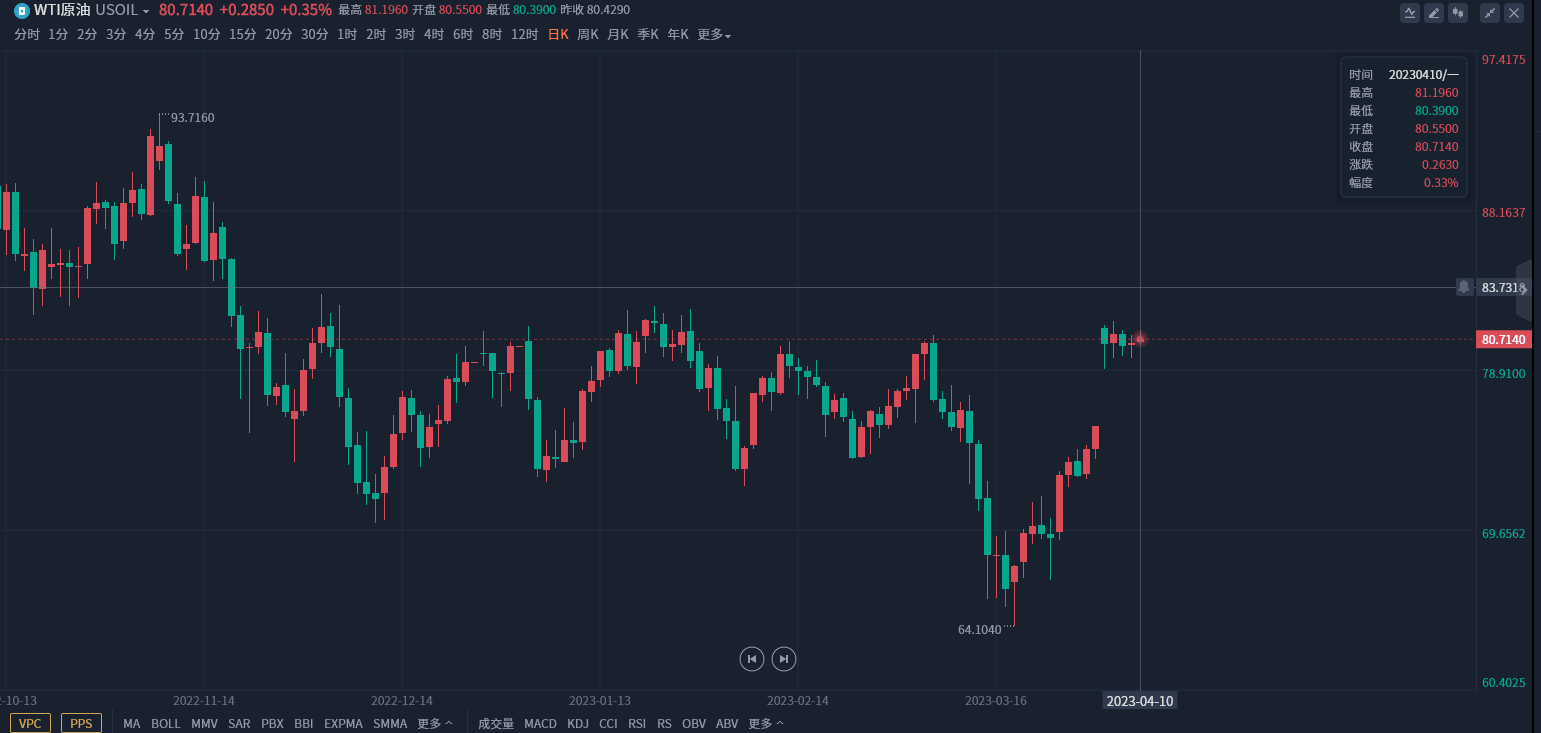U.S. oil stands firm at the $80 mark, three major worries or drag down the market.
On April 10, U.S. oil continued to shake after the opening, hitting a high of 81.19美元。It is now reported that 80.$71, up 0 on the day.33%。The chart below shows that oil prices continued to fluctuate in a narrow range after last Monday's opening U.S. oil jump.。Subsequent U.S. oil, while giving back some of its gains, retreated modestly。
This week, the market was not calm before the monthly reports of the three major crude oil markets were released.。
On April 10, U.S. oil continued to shake after the opening, hitting a high of 81.19美元。It is now reported that 80.$71, up 0 on the day.33%。The chart below shows that oil prices continued to fluctuate in a narrow range after last Monday's opening U.S. oil jump.。Subsequent U.S. oil, while giving back some of its gains, retreated modestly。

On the evening of April 7, the U.S. Labor Office released U.S. non-farm payrolls and U.S. unemployment data for March.。Data show that while U.S. non-farm payrolls fell short of expectations in March, better-than-expected unemployment data gave the market a shot in the arm and the U.S. job market remains resilient。
In response, ABN AMRO pointed out in its latest customer note that the U.S. job market, while cooling, is still relatively tight。
Wells Fargo analysts also point to this as the type of jobs report they believe the Fed would like to see: an orderly slowdown in job growth, an expansion in the labor supply, and a gradual approach to wage growth in line with the central bank's 2 percent inflation target.。
Resilient US job market boosts oil prices somewhat。As of press time, U.S. oil has basically stood firm at the $80 mark。
In terms of production capacity, after OPEC + collectively unexpectedly announced production cuts, giving oil prices support。Separately, the number of active U.S. oil rigs fell by two to 590 last week, while natural gas rigs fell by two to 158, according to a report released by Baker Hughes, suggesting U.S. production won't rise in the near term.。
It was also reported that Saudi Aramco increased the price of its flagship Arab light crude oil exported to Asia in May by 30 cents per barrel from April, continuing to benefit oil prices.。
Behind the frequent positive, the market is actually not calm。
First, the continued rise in oil prices has increased the risk of inflation, which has been the Fed's focus for nearly a year.。Once inflation rises, it will inevitably raise expectations of a Fed rate hike, and expectations of a return to recession will increase, which in turn will drag down oil prices.。
In fact, investors have stepped up their bets on the Fed's rate hike following the release of the non-farm payrolls data。
Warren Patterson, head of commodities research at ING, said markets may be concerned about the growing possibility of a hard landing.。
Second, the banking crisis has exposed the fragility of the financial system and downside risks to the global economy continue to intensify.。
IMF Managing Director Kristalina Georgieva said recently that due to factors such as U.S. inflation and the banking crisis, global economic growth is expected to fall below 3 percent in 2023 and remain at around 3 percent for the next five years, with downside risks to the global economy now increasing.。
She also said that while strong monetary and fiscal policies had avoided a worse outcome, the outlook for global growth remained weak due to persistently high inflation.。
If the economy falters and industrial and business activity slows, crude oil demand will fall short of expectations, which in turn will depress oil prices.。
Finally, the supply of crude oil from some of the smaller oil-producing countries has recently ushered in a surge.。
Analysts have pointed out that since last autumn, Iran, Guyana, Norway, Kazakhstan, Brazil and Nigeria have extracted more oil, increasing global oil supplies, especially in Nigeria, where production has surged.。
In response, Nigeria said production rebounded after companies began transporting crude oil through the Niger Delta by barge.。While barges are slower and more expensive to transport than pipelines, oil can be protected by guards on support ships.。
In addition, there is news that Iran has increased its oil production by 200,000 barrels per day since last September, in part due to a drop in Venezuelan exports.。Meanwhile, Brazil's January production also hit a record high.。Investors have sold off riskier assets as economic issues such as last month's banking turmoil caused panic and concern in the market, which could make the oil market vulnerable if there is additional supply.。
·Original
Disclaimer: The views in this article are from the original Creator and do not represent the views or position of Hawk Insight. The content of the article is for reference, communication and learning only, and does not constitute investment advice. If it involves copyright issues, please contact us for deletion.